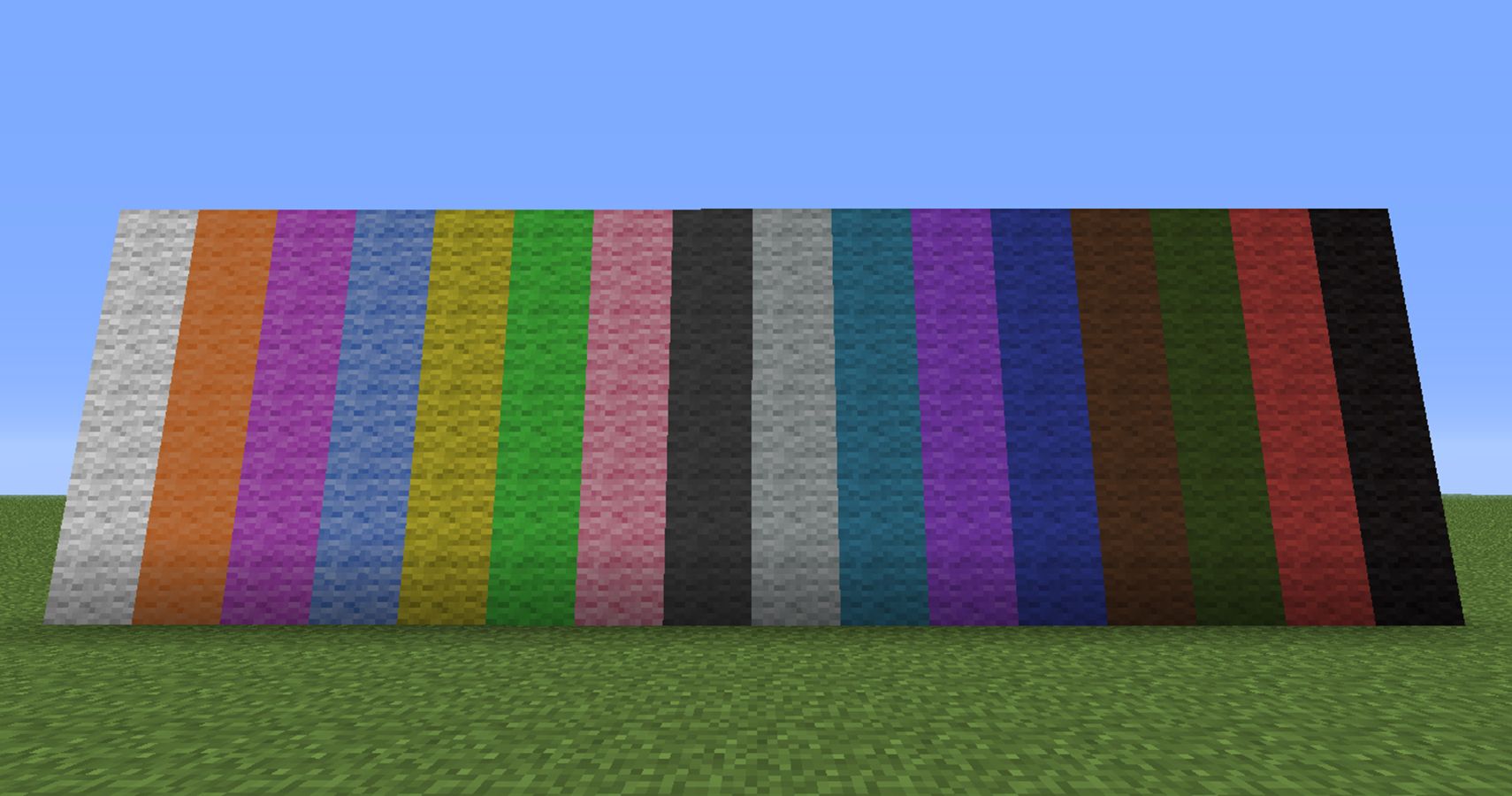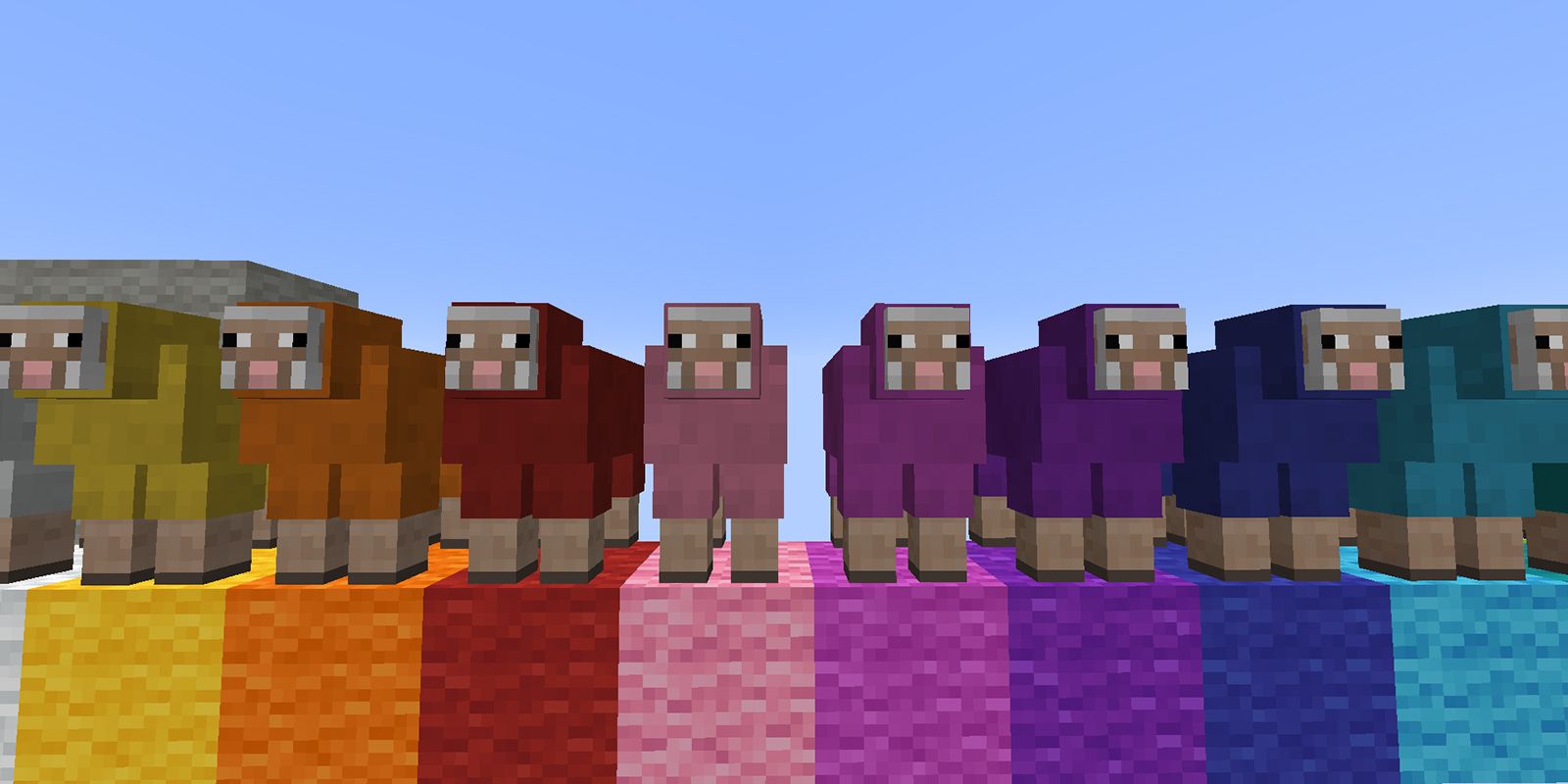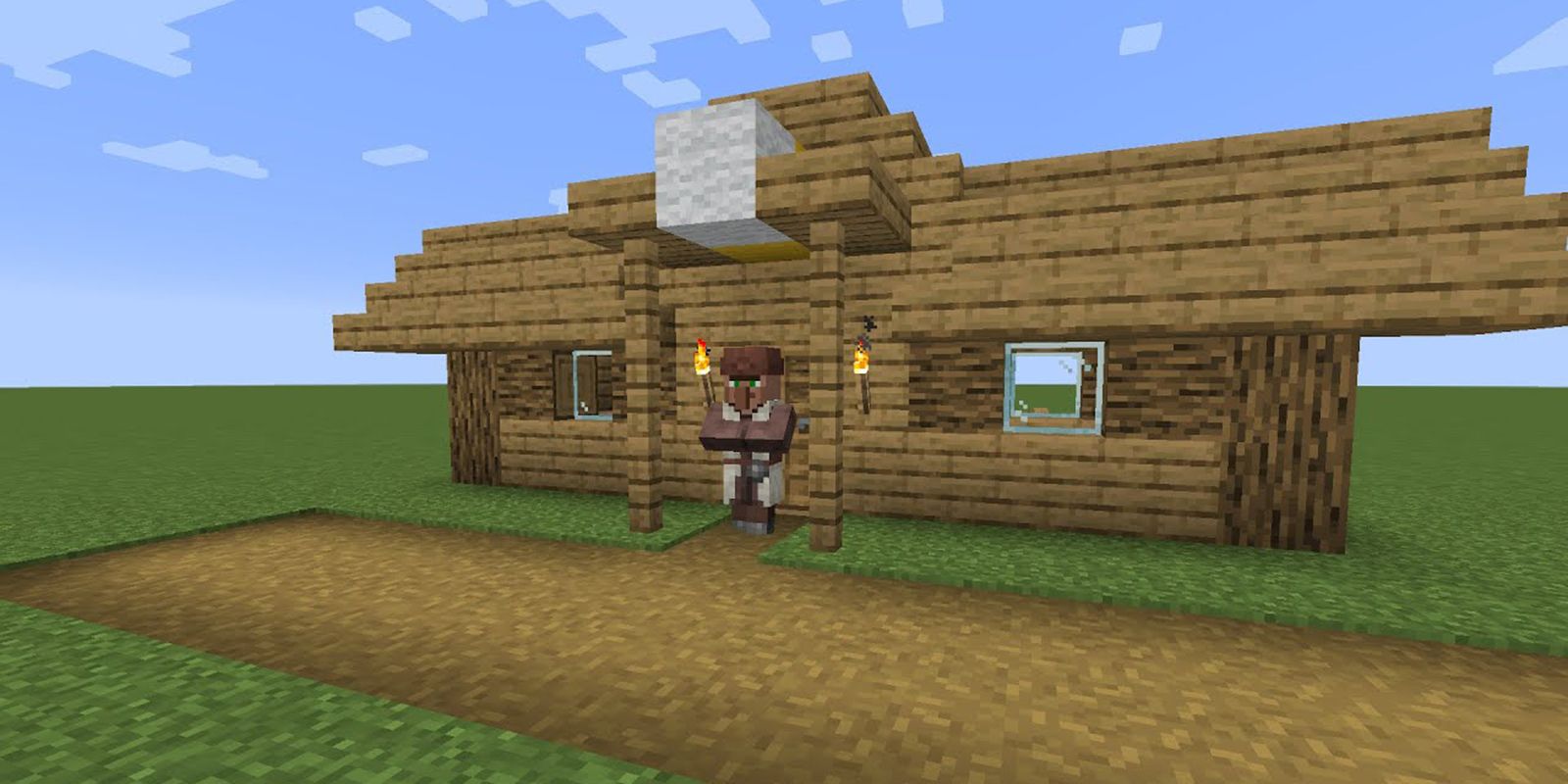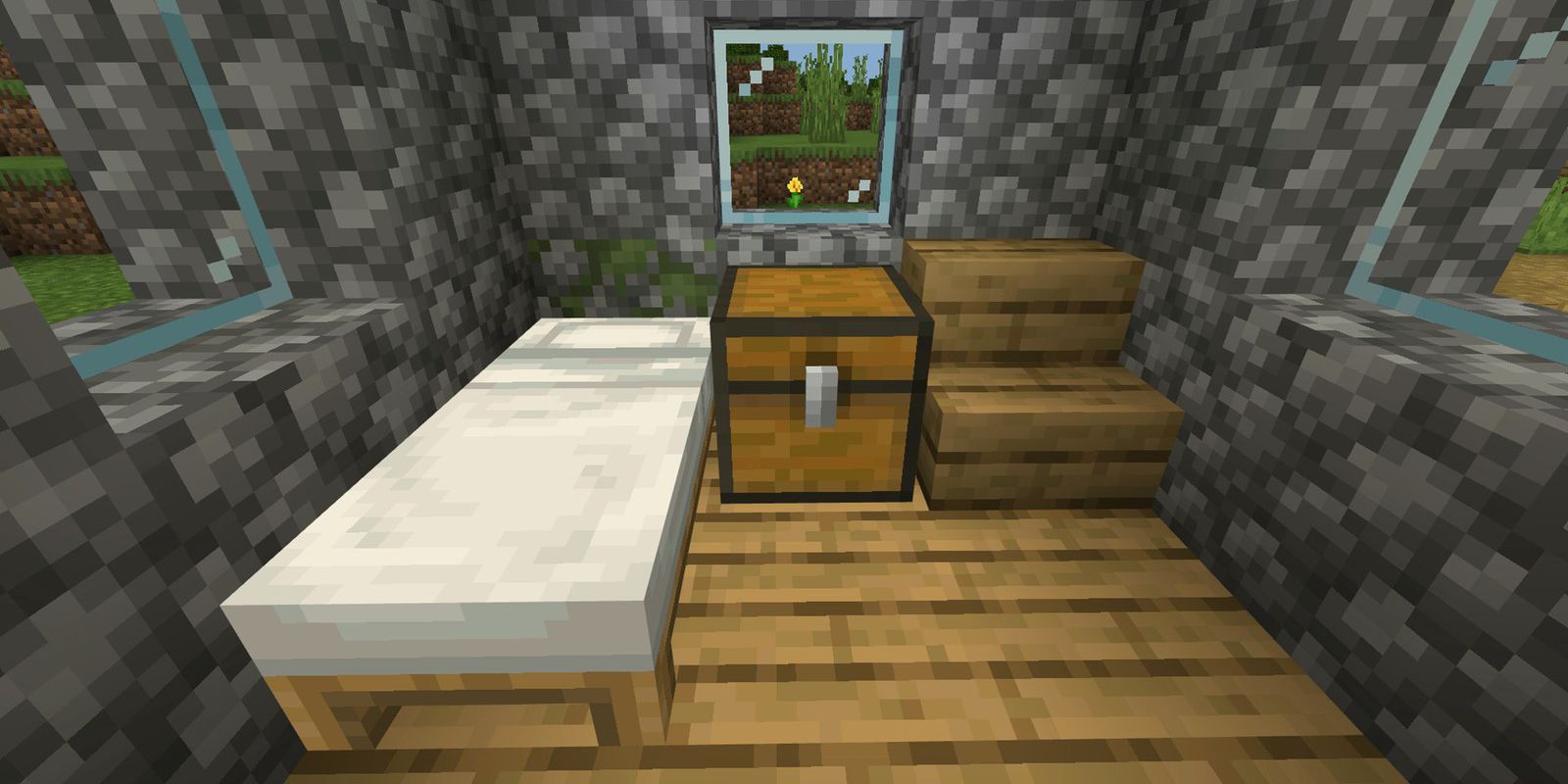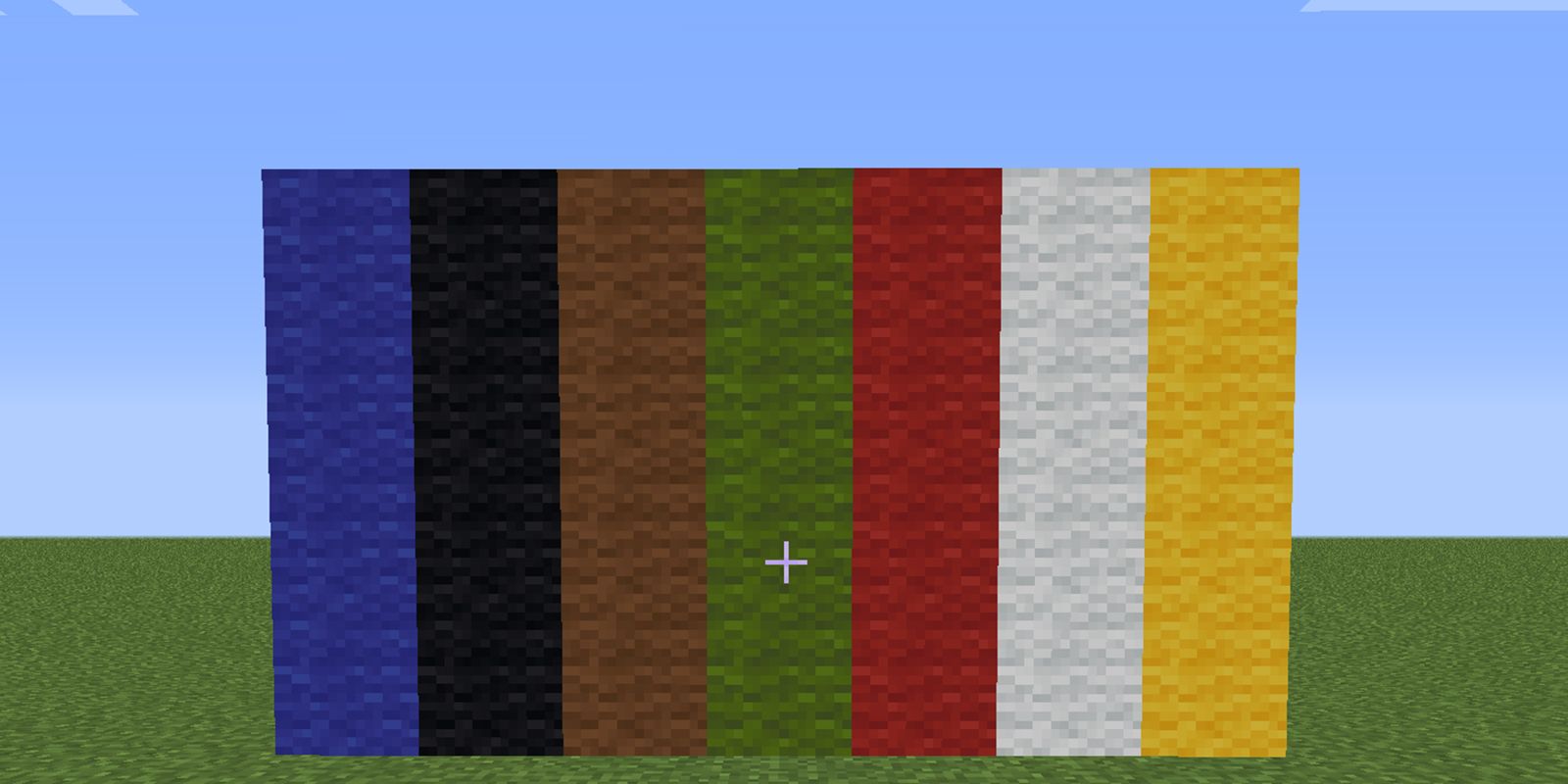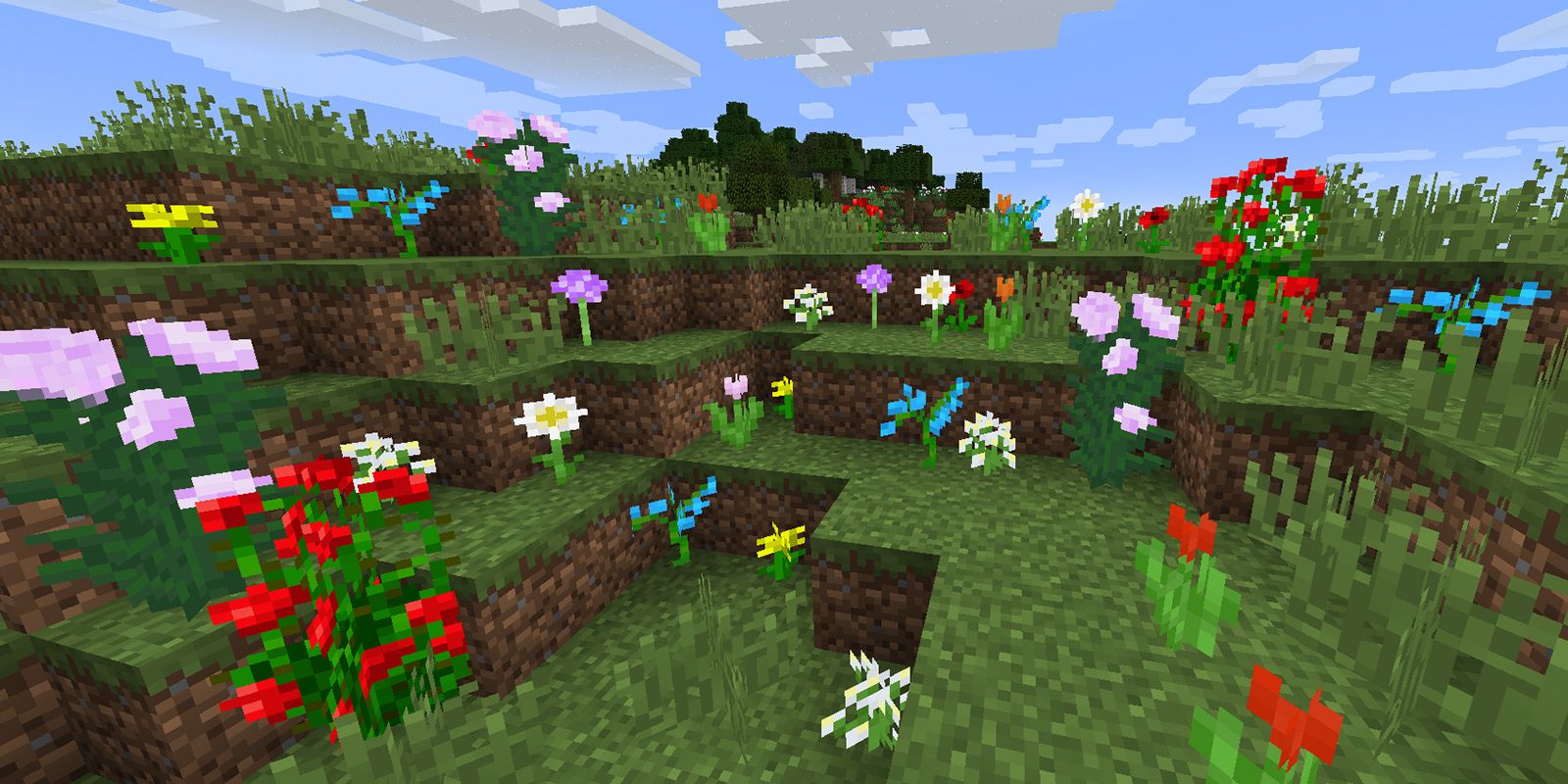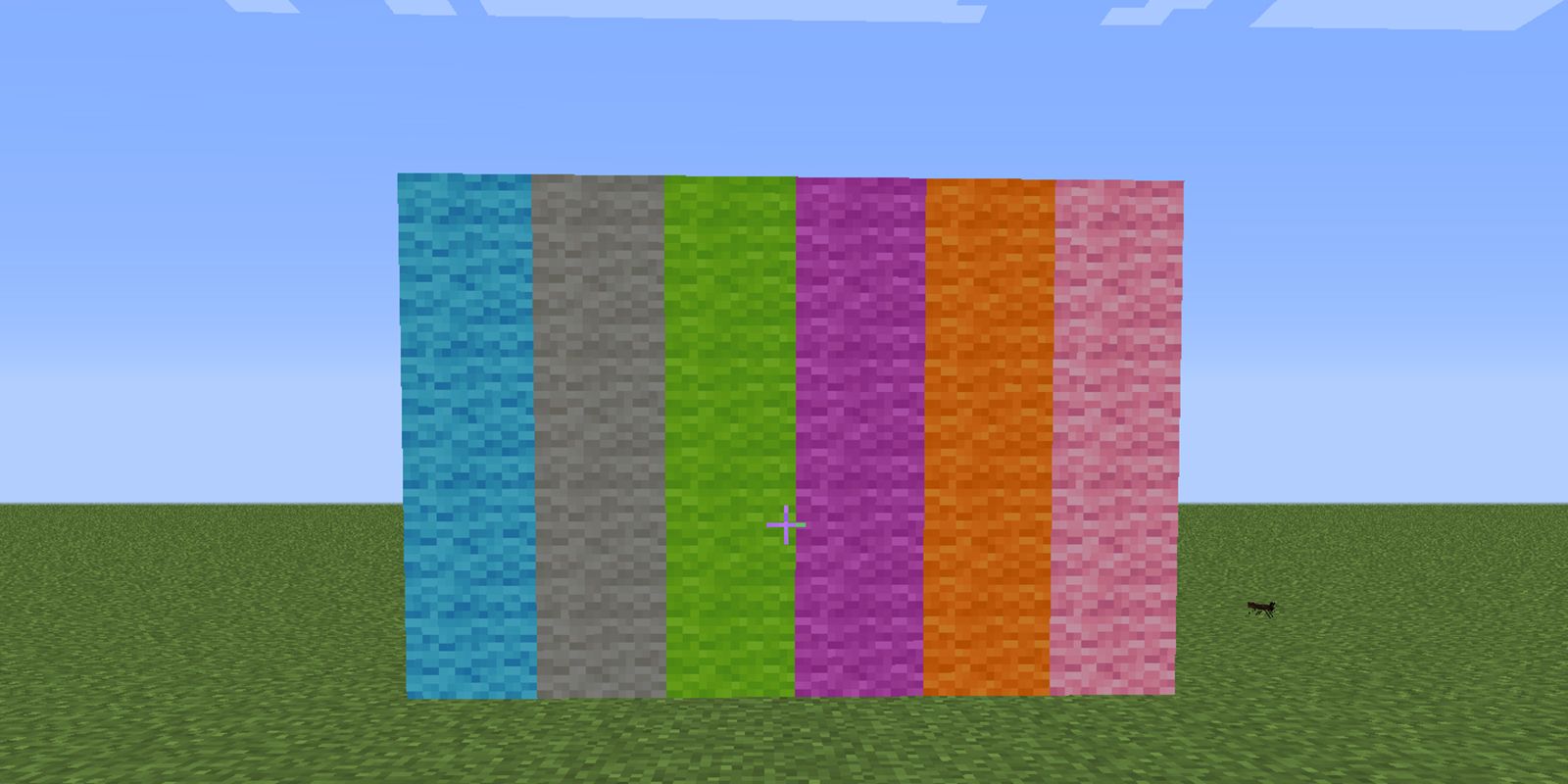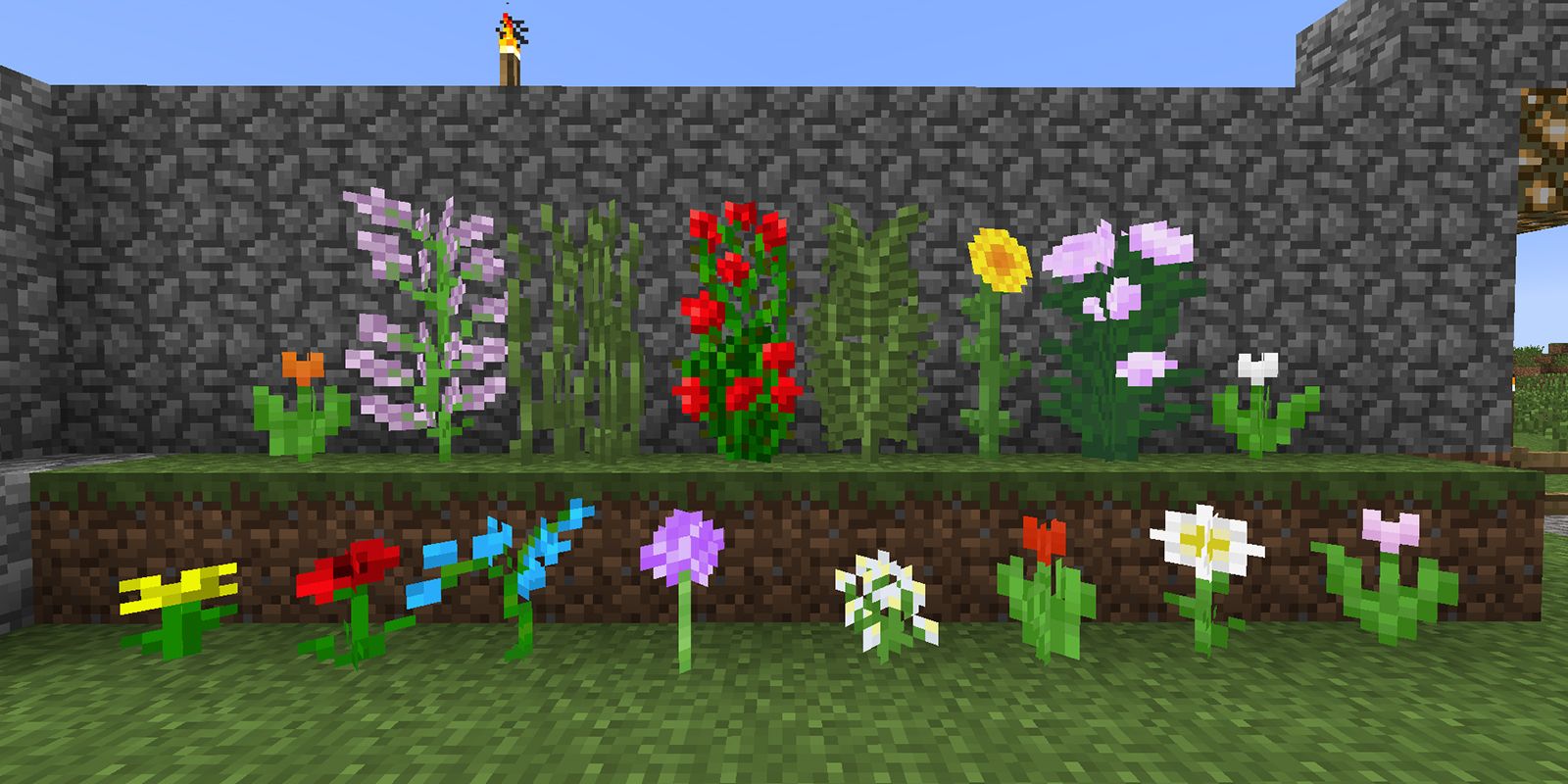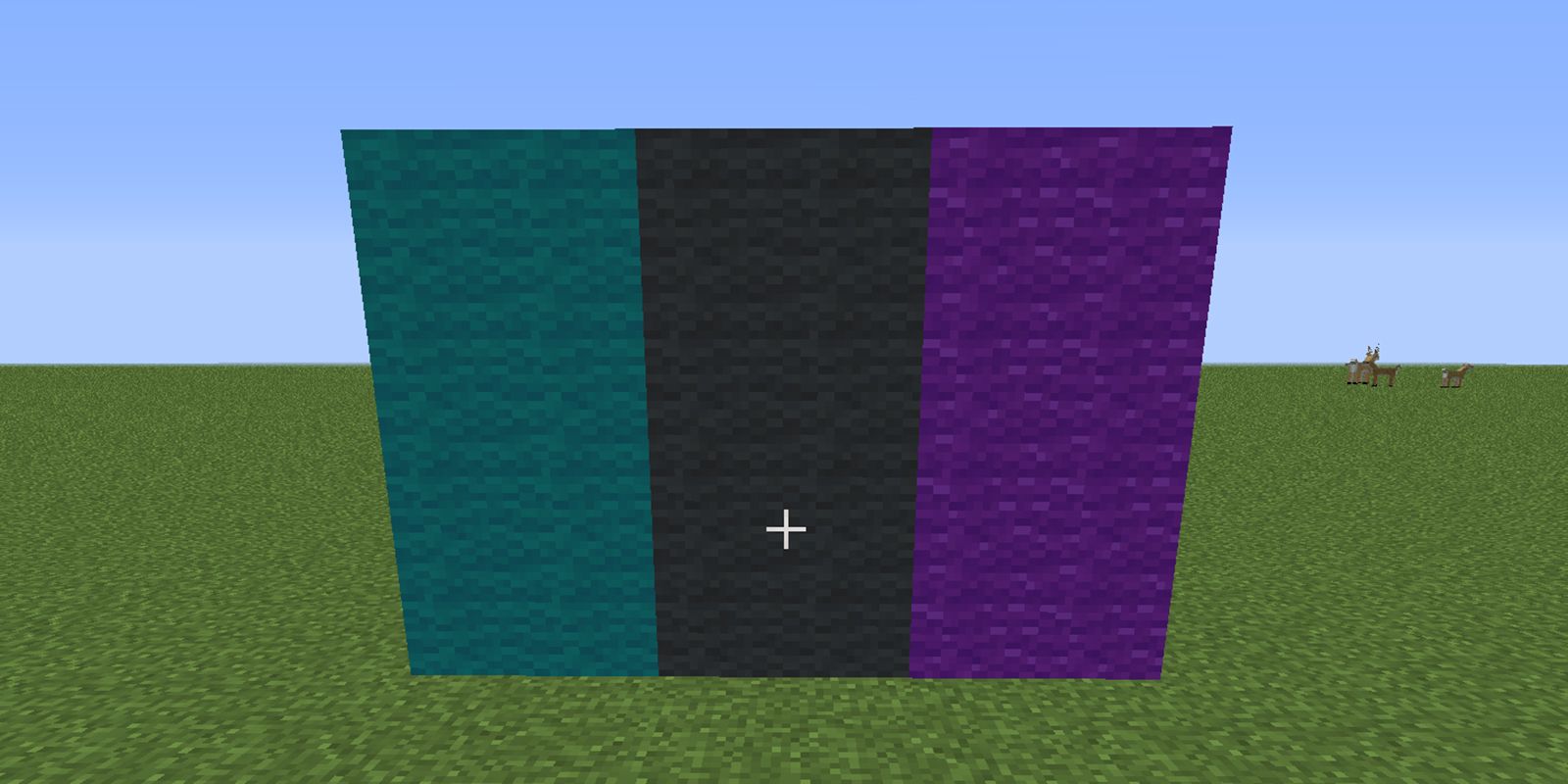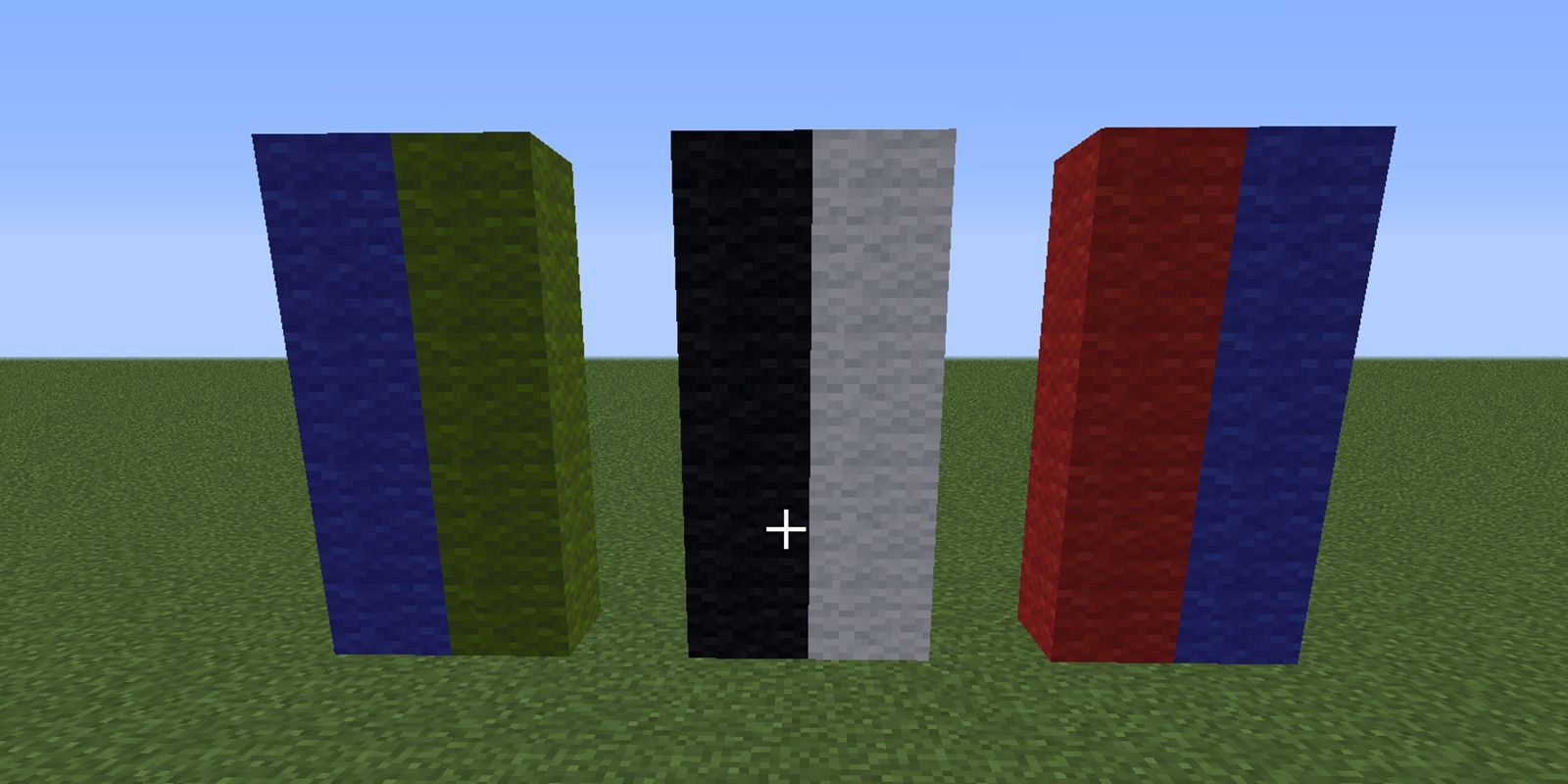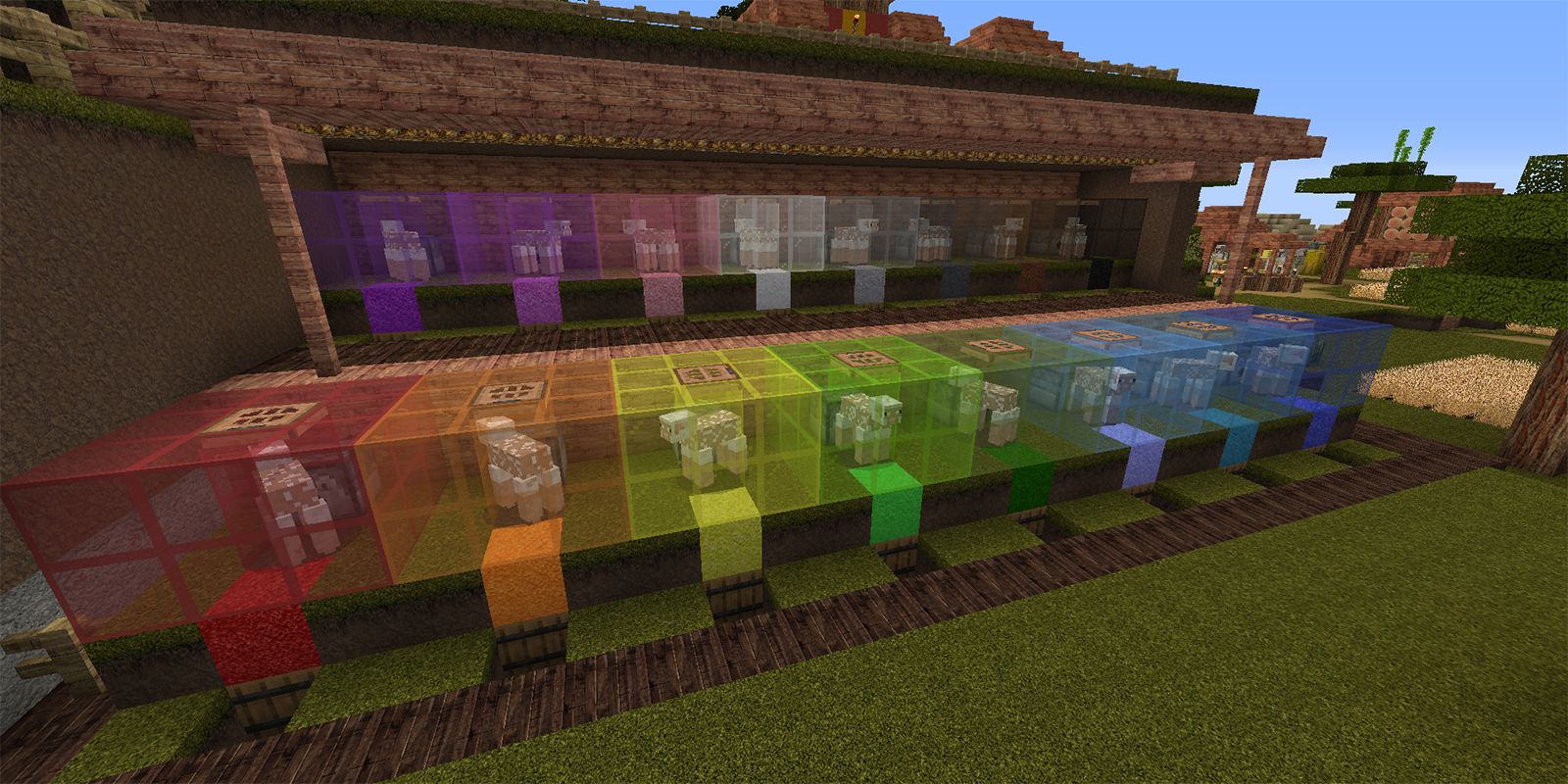Wool is an interesting block in Minecraft. It’s primarily a decorative block meant to spruce up a place or to craft decorative items like Banners, Beds, Carpets, and Paintings. On a more practical level, it’s a very inefficient form of renewable fuel for Furnaces or it can be traded with Villagers for Emeralds.
Any player building with aesthetics in mind will likely want a steady supply of wool in all its various shades. Here are the ways to obtain this decorative block, what colors they can be dyed, and how to obtain those dyes.
10 Sheep Farms
The traditional method for obtaining wool and dyed wool is through tamed Sheep. Sheep natural spawn in White, Light Gray, Gray, Black, Brown, and on rare occasions Pink. But any Sheep can be dyed any color by applying the dye directly to the Sheep.
Breeding a Sheep with the same colored Sheep will result in an offspring of the same color. Breeding two different colored sheep has an equal chance of resulting in a Sheep sharing the same color as one parent or being a blend of the two. For instance, breeding a Black Sheep with a White Sheep can result in Gray. Sheep will drop their wool when the player uses Shears on them resulting in one to three blocks of it or will drop one block when killed.
9 Trading And Buildings
Another viable method for obtaining Wool is to trade for it with Shepherd Villagers. Each Villager will sell a colored wool block and there’s a 1.78% chance it will be a particular color. Players can breed a number of Villagers to trade each type of color but this will take a long time. Each Wool block will also cost an Emerald.
Wool blocks of various colors will also spawn in certain naturally occurring buildings. White and Yellow appear in villages, White appears in Pillager outposts, and every color will appear in Woodland Mansions. This method isn’t renewable but is a nice bonus while gathering other supplies at these locations.
8 Loot And String
The final methods to obtain colored Wool blocks is in various loot and by crafting them. A White Wool block can be crafting by combining four string together in a square.
There is a chance a Wool block in Black, White, Gray, Light Gray, or Brown will appear in a Shepherd’s Chest in Villages. White Wool has the highest chance of appearing at 55.8%, Black at 33.8%, with the remaining colors at 23.3%. Anywhere from one to three blocks will appear with up to eight for White only.
7 Primary Colors
Primary Colors are colored dyes that only appear from select items, they cannot result from combining colors. The Primary Colors in Minecraft are Black, Blue, Brown, Green, Red, White, and Yellow. Each dye has different items that, with a few exceptions, can be broken down in a crafting grid resulting in the dye.
- Black Dye – Ink Sac or Withering Rose
- Blue Dye – Lapis Lazuli or Cornflower
- Brown Dye – Cocoa Beans
- Green Dye – Cactus (must be smelted in a Furnace)
- Red Dye – Poppy, Rose Bush, Red Tulip, or Beetroot
- White Dye – Bone Meal or Lilly Of The Valley
- Yellow Dye – Dandelion or Sunflower
6 Recommended Primary Color Sources
The best way to obtain these dyes are through Flower Farms, Squid Farms, Cocoa Farms, and Cactus Farms. Most flowers can be harvest from Flower Forests, Sunflower Plains, or Plains biomes. Applying Bonemeal to a grass block can sometimes result in flower that is found in that specific biome.
Squid farms involve large bodies of water designed to kill Squids for their Ink Sacs to produce Black Dye. Cocoa Farms require Jungle Wood and are easy to set up. Cactus farms require Sand and Cactus sourced from Deserts or Mesas.
5 Pseudo-Primary Colors
Pseudo-Primary Colors are similar to Primary Colors in that they can be created directly with items. But they can also be created by combining Primary colors. The Pseudo-Primary colors are Light Blue, Light Gray, Lime, Magenta, Orange, and Pink.
- Light Blue – Blue Orchid or combining Blue and White dyes.
- Light Gray – Azure Bluet, Oxeye Daisy, White Tulip, or combining White and Grey or two White and one Black dyes.
- Lime – Smelt a Sea Pickle or combine Green and White.
- Magenta – Lilac, Allium or combining Purple and Pink, Red, Blue, and Pink, or two Red, one blue, and one White.
- Orange – Orange Tulip, or combining Red and Yellow.
- Pink – Peony, Pink Tulip, or combining Red and White dyes.
4 Recommended Pseudo-Primary Color Sources
The best way to get these colors are through Flower Farms and Sea Pickle Farms. Most flowers are found in Plains, Sunflower Plains, and Flower Forest biomes. Players can apply Bone Meal to grass blocks in these biomes to receive these flowers.
Sea Pickles naturally generate on the floor of Warm Ocean biomes and on Coral Reefs. More Sea Pickles can be grown by applying Bone Meal on one. Sea Pickles can also occasionally be purchased from Wandering Traders.
3 Secondary Colors
Secondary Colors are only obtainable by mixing Primary Colors together. There are only three Secondary Colors and they are Cyan, Gray, and Purple.
- Cyan – Combine Blue and Green.
- Gray – Combine Black and White.
- Purple – Combine Blue and Red.
2 Random Sources Of Dyes
In addition to the more traditional means of obtaining dyes there are other options available. This can be particularly helpful if the player hasn’t encountered a Flower-based biome. There are also some means that the player may be pursuing anyways that can prove helpful.
Wandering Villagers will sell various items that can be broken down into dyes, Sea Pickles are an example of this. Children in villages also have a chance of giving the player a random flower if they have the Hero of the Village effect. Iron Golems when killed will drop Poppies and Withers when they kill other mobs will create Wither Roses.
1 Automatic Colored Wool Farm
For players wanting a mass amount of colored Wool the absolute best thing to do is build an automated farm for colored Wool. Multiple guides exist online, but the basic premise is the same. The player dyes a Sheep in the desired color and confines it to a glass pen with a grass bottom.
An Observer can be attached to the Grass in such a way that when the Sheep eats the Grass and it switches to a Dirt block a Redstone pulse is sent. That pulse activates a Dispenser with a Shear inside to automatically Shear the Sheep. Hoppers with Minecarts are placed below the grass to catch the Wool that drops from the process. The Sheep has a 90% of growing new Wool every two minutes when done this way.

